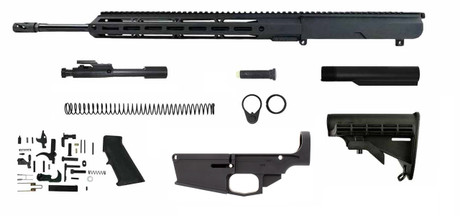How to Build an AR-10: The Complete Guide
Posted by 80-Lower.com on Jun 26th 2023
We've covered how to build an AR-15, but many shooters want a rifle with a larger caliber. While the AR-15 can chamber some larger cartridges -- like 6.5 Grendel and 300 Blackout -- the AR-10 platform is what you need to load rounds like .308 Winchester and 6.5 Creedmoor.
Picking Your AR-10 Platform

Before you start building a .308-based AR, you need to pick a specific platform. There are two main, competing options: The "official" ArmaLite AR-10, and the DPMS LR-308.
Although both rifles look the same at first glance, small differences in their external and internal components -- like the shapes of the upper and lower receivers -- mean these two platforms' parts are typically not interchangeable.
This guide compares the differences between the ArmaLite and DPMS rifles' parts.
"Should I choose ArmaLite or DPMS?"
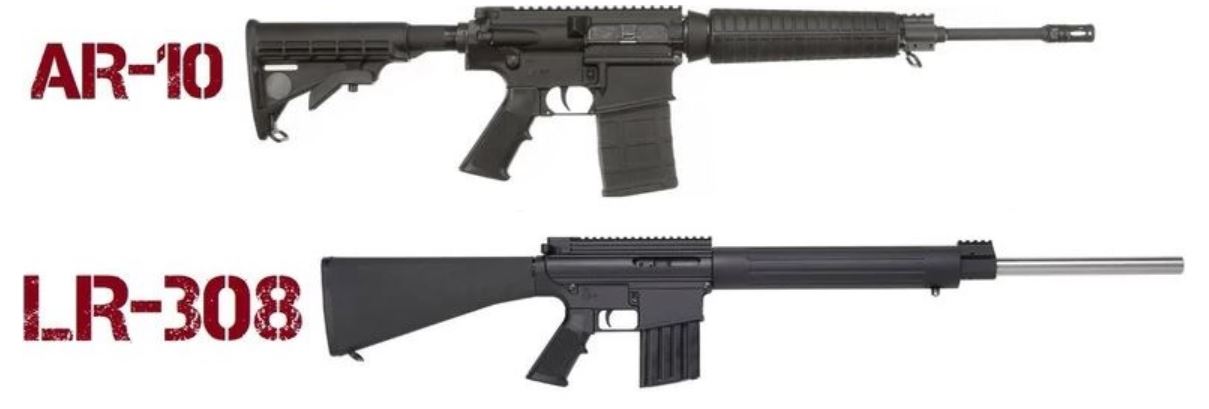
We recommend the DPMS LR-308 platform for a few reasons: ArmaLite's AR-10 parts are hard to come by. FFLs struggle to keep their stripped lower receivers in stock, and ArmaLite upper assemblies are expensive. You'll also need a lower parts kit that's compatible with the ArmaLite lower. This is often difficult to source, too.
Far more FFLs and retailers stock DPMS LR-308 parts and kits. This platform provides a greater variety of barreled uppers, lowers (including the opportunity to build an AR-10 80% lower), and compatible accessories. These parts are often more affordable and easier to find, too.
Lastly, the LR-308 platform makes use of many AR-15 components. That makes building and customizing your rifle even easier.
AR-10 vs. AR-15 Parts Compatibility
If you've opted to build an AR-10 based on the DPMS pattern, these upper receiver parts are interchangeable between the AR-10 and AR-15:
- Gas block
- Gas tube
- Gas roll pins
- Forward assist
- Detachable front sight
- Detachable rear sight
The following upper receiver components are not interchangeable between the AR-10 and AR-15:
- Barrel
- Extension
- Dust cover
- Handguard
- Muzzle device
- Bolt carrier group
- Stripped upper receiver
These lower receiver components are interchangeable between the AR-10 and AR-15:
- Safety
- Safety detent
- Safety spring
- Trigger
- Trigger pin
- Trigger spring
- Hammer
- Hammer pin
- Hammer spring
- Disconnector
- Disconnector spring
- Pistol grip
- Pistol grip bolt
- Magazine catch
- Magazine catch spring
- Magazine catch button
- Buffer tube
- Castle nut
- Latch plate
- Buttstock
These AR-15 lower components are not interchangeable with the AR-10:
- Buffer
- Bolt catch
- Bolt catch roll pin
- Bolt catch spring
- Buffer spring
- Front pivot pin
- Rear takedown pin
- Stripped lower receiver
How to Build an AR-10
First, you need to decide which caliber you'll send downrange out of your new AR-10. This larger AR platform can chamber various calibers. We've compared the most popular options below.
Choose an AR-10 Caliber
308 Winchester / 7.62x51 NATO. These two cartridges are the original loads found in the AR-10. The 7.62x51 NATO cartridge is what the U.S military still chambers in its AR-10, and the 308 Winchester remains one of the most popular hunting and bolt gun cartridges in the world. We're covering how to build an AR-10 assuming you've chosen this cartridge for your build.
243 Winchester. This intermediate sporting cartridge is favored among hunters, too. It's perfect for small and medium game. It provides higher chamber pressures with flatter trajectories downrange for increased accuracy, while affording less felt recoil.
6.5 Creedmoor. A king of the long-range game, 6.5 Creedmoor is favored by F-class shooters and 1,000-yard enthusiasts. Even in a semiautomatic, gas-operated rifle like the AR-10, Creedmoor can reliably reach out and touch targets better than any other AR caliber with little effort.
338 Federal. If you're gunning for large game and trophy tags -- like wild hogs, elk, bear, or moose -- 338 Federal is a reliable companion. Based on the .308 cartridge, this necked up .33-caliber round provides high muzzle energy (about 3,200 ft. lbs.) and velocities well above 2,600 FPS.
300 Win Mag. Arguably the most potent cartridge you can chamber in the AR-10, 300 Win Mag will punch holes in steel and immediately take down the largest game in North America (and Africa). It affords over 4,000 ft. lbs. of muzzle energy and velocities exceeding 3,000 FPS.
Choose an AR-10 Lower
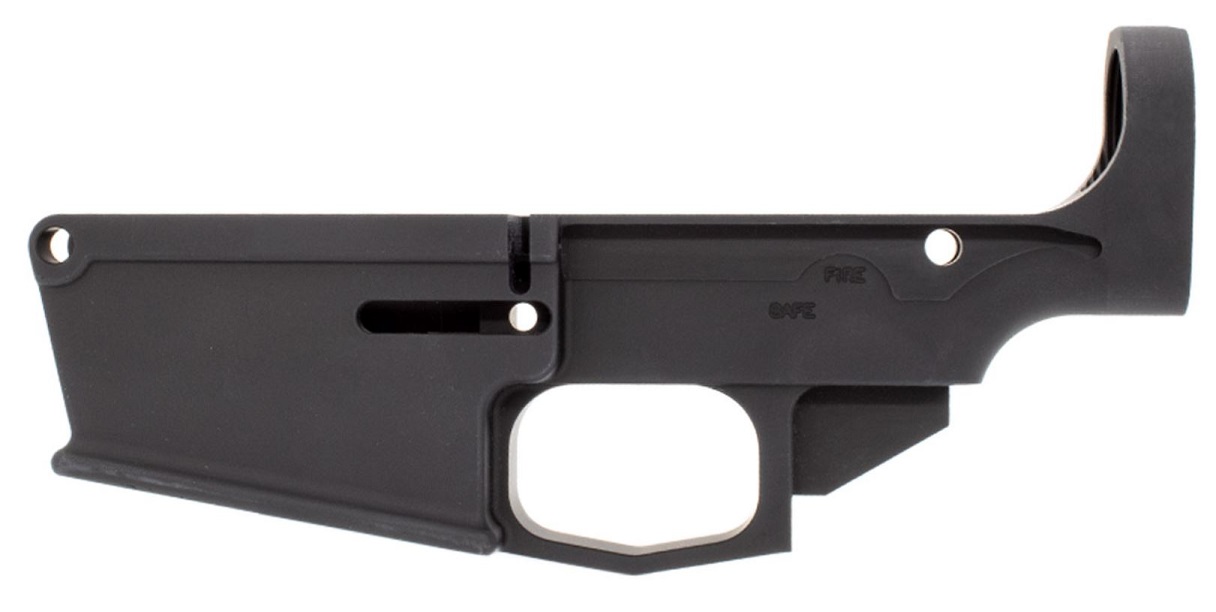
Functionally, all DPMS-pattern AR-10 lower receivers are the same: They'll use the same lower parts kits and grips, and the same buffer tube, castle nut, latch plate, and magazines. They're also universally compatible with all DPMS-pattern AR-10 upper receivers. So, picking a lower becomes a matter of selecting your favorite looks and features.
Like we said, you can start your AR-10 build by fabricating a .308-compatible 80% lower. Options are available in billet or forged aluminum. Retail-bought stripped lowers -- which must be purchased from an FFL -- provide the same parts compatibility.
Pick an AR-10 Lower Parts Kit
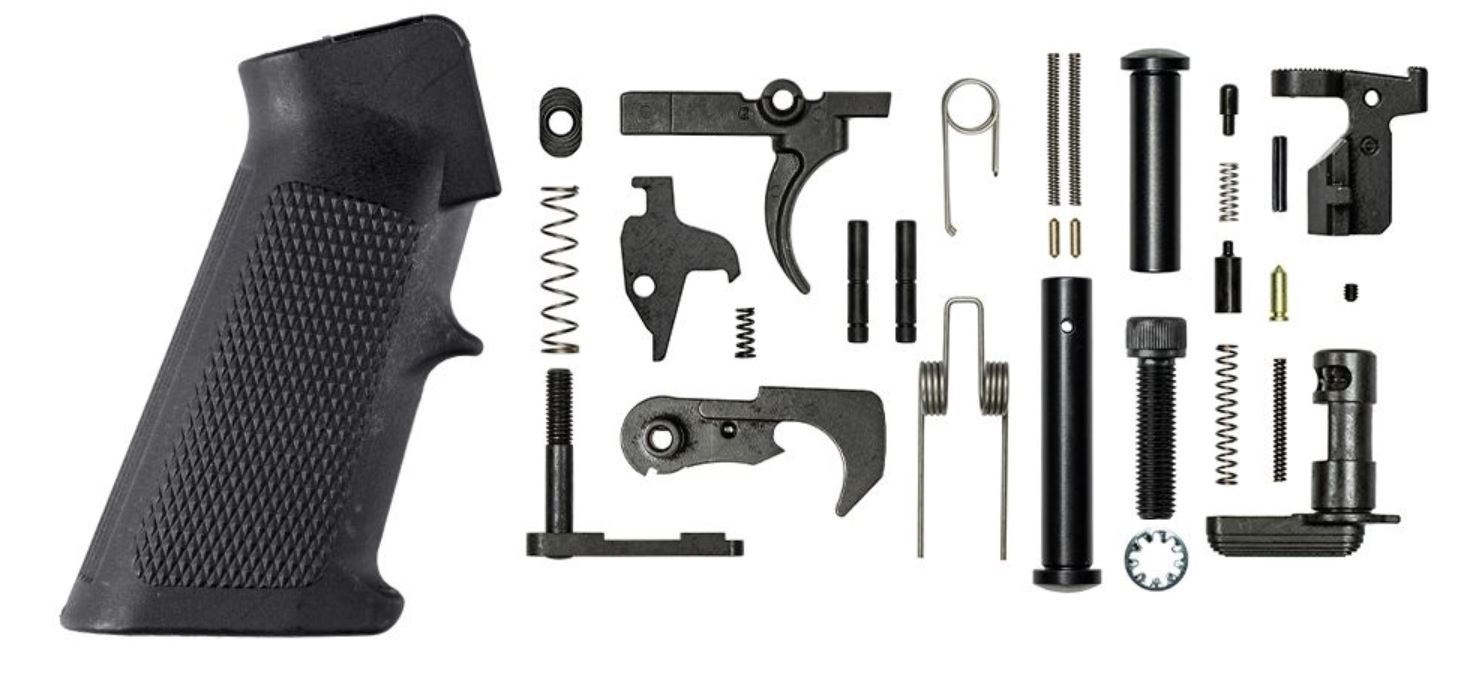
If you already have spare AR-15 lower parts, you can refer to our compatibility list above to determine which parts you can reuse for your AR-10 build. To keep things simple, you can just buy a full AR-10 lower parts kit.
Picking an AR-10 Buffer Tube Assembly

The AR-10 completely recycles the AR-15 buffer setup: The tube, recoil spring, size and length of the buffer, castle nut, and latch plate are all identical to the 5.56/.223 setup. The primary difference lies in the buffer weight: AR-10s require heavier buffers to manage the extra recoil impulse from larger cartridges.
Rather than utilizing a Carbine (3.0 oz) or H1 (3.4 oz) AR-15 buffer, AR-10 buffers weigh at least 3.8 to 5.4 ounces. Generally, an H2 buffer (4.6 to 4.7 oz) is a good starting point to try for most loads.
Select an AR-10 Upper Receiver

The AR-10 upper receiver functions like any other AR-type upper. The only difference is the receiver's size -- it's noticeably longer to accommodate the .308 AR's bolt carrier group. Like some AR-15 uppers, the AR-10 upper can be optioned without a forward assist -- a "slick-side" upper -- or it can be found with a side-charging bolt carrier and charging handle.
Picking an AR-10 Handguard

Although AR-10 handguards look identical to AR-15 units, they sport a larger internal diameter. The barrel nut diameter of the AR-10 is also larger than the AR-15's. Handguards are not interchangeable between platforms for this reason.
Functionally, all AR-10 handguards work like any other: They secure to the barrel nut itself using a delta ring or set screws. Some come with anti-rotation or anti-slip pins to prevent the handguard from becoming loose during live fire.
The standard mounting options are available: M-LOK, KeyMod, or Picatinny.
The AR-10 Barrel & Gas System

The barrel is arguably the most important component of your AR-10 build. Barrel length, twist rate, barrel steel, and the gas system length all play critical roles in providing optimal accuracy and reliable cycling.
If you're building a .308-chambered AR-10, then selecting the optimal barrel is easy: You'll want a barrel measuring 18" to 22", with a 1:10 twist rate.
Creedmoor barrels are generally longer -- 22" to 24" -- to provide optimal velocity. The optimal twist rate for this cartridge is 1:8. Most other AR-10 cartridges require barrels measuring 16" to 24", with twist rates ranging from 1:7 to 1:10.
Regardless of the cartridge being chambered, the AR-10 univerisally requires a rifle-length gas system. Using any shorter system (like a mid-length) would only increase felt recoil.
Assembling Your AR-10 Parts
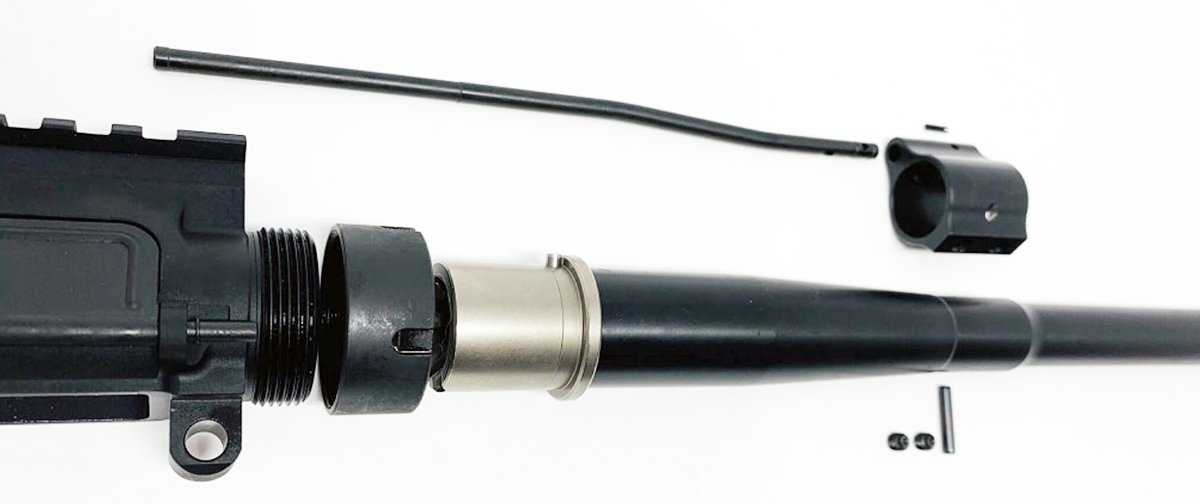
If you've ever installed an AR-15 parts kit or upper receiver, you already know how to put together an AR-10. All installation steps for the upper and lower assemblies are identical. If you're a first-time builder, we've got plenty of helpful step-by-step guides with pictures and detailed instructions:
Guide: How to Install the AR Barrel and Gas System
Guide: How to Assemble the AR Lower Receiver
To assemble your AR-10's upper and lower halves, you'll need some basic tools:
- Gunsmithing Hammer
- Roll Pin Punch Set
- Armorer's Wrench
- Tabletop Vise
- Torque Wrench
The above tools (except for a vise, available here) can be bought in the Wheeler AR Armorer's Kit.
DISCLAIMER: If you are new to the world of DIY gun building, you likely have a lot of questions and rightfully so. It’s an area that has a lot of questions that, without the correct answers, could have some serious implications. At 80-lower.com, we are by no means providing this content on our website to serve as legal advice or legal counsel. We encourage each and every builder to perform their own research around their respective State laws as well as educating themselves on the Federal laws. When performing your own research, please be sure that you are getting your information from a reliable source.

